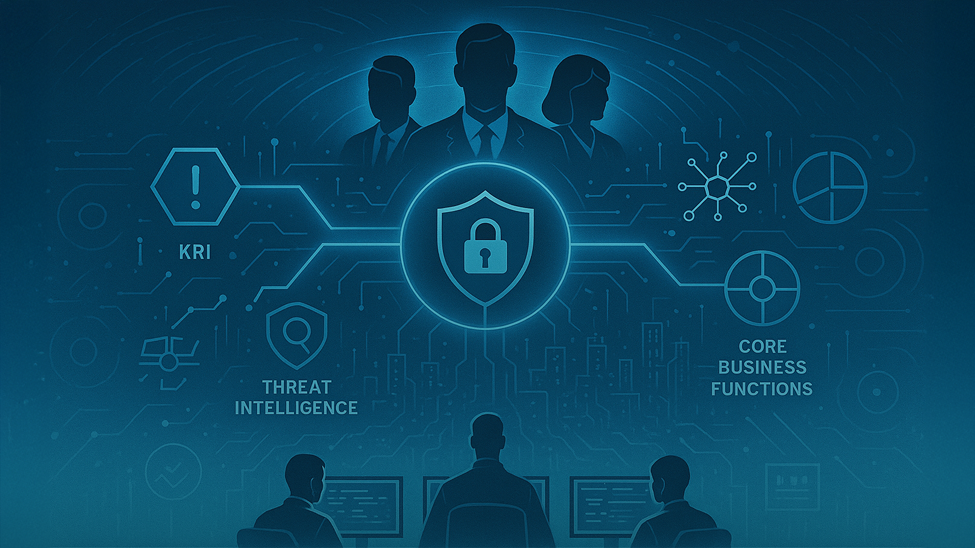Managing Cyber Risk: Best Practices for Cyber Risk Management
Discover the best practices for managing cyber risk and safeguarding your business against potential threats.
Understanding Cyber Risk Management
Understanding Cyber Risk Management is crucial for businesses in today's digital landscape. It involves identifying, analyzing, and evaluating potential risks that may arise from cyber threats. By understanding these risks, organizations can develop effective strategies to mitigate them.
Cyber risk management involves assessing the vulnerabilities in an organization's systems, networks, and data, as well as the potential impact of cyber attacks. It requires a comprehensive understanding of the various types of cyber threats, such as malware, phishing attacks, ransomware, and data breaches.
To effectively manage cyber risk, organizations must constantly stay updated on the latest cyber threats and vulnerabilities. This includes monitoring the evolving threat landscape, conducting regular risk assessments, and implementing appropriate security measures.
By understanding cyber risk management, businesses can make informed decisions regarding their cybersecurity investments and prioritize their resources to protect against the most significant threats.
Identifying Potential Cyber Threats
Identifying potential cyber threats is a critical step in managing cyber risk. It involves being proactive and vigilant in identifying the various types of threats that can compromise the security of an organization's systems and data.
Organizations can identify potential cyber threats through various methods, such as monitoring network traffic for suspicious activities, conducting vulnerability assessments, and analyzing threat intelligence reports. It is essential to have a robust incident detection and response system in place to quickly identify and respond to potential threats.
By effectively identifying potential cyber threats, organizations can take proactive measures to prevent attacks and minimize the impact of any successful attacks.
Implementing Effective Cyber Security Measures
Implementing effective cyber security measures is vital to protect against cyber threats and reduce the risk of security breaches. It involves implementing a combination of technical, administrative, and physical controls to safeguard an organization's systems, networks, and data.
Some essential cyber security measures include implementing firewalls and intrusion detection systems, regularly updating software and systems, conducting regular security audits, and implementing strong access controls and encryption mechanisms.
Organizations should also establish incident response procedures and protocols to quickly respond to and mitigate any security incidents. Regular employee training and awareness programs are also crucial to ensure that employees understand and follow proper security practices.
By implementing effective cyber security measures, organizations can significantly reduce the risk of cyber attacks and protect their valuable assets and sensitive information.
Creating a Cyber Incident Response Plan
Creating a cyber incident response plan is essential for effectively managing cyber risk. It involves developing a structured and well-defined plan to respond to and recover from cyber security incidents.
A cyber incident response plan should include steps to identify and contain the incident, assess the impact, mitigate the damage, and restore normal operations. It should also outline the roles and responsibilities of the incident response team and define communication channels and reporting procedures.
Regular testing and updating of the incident response plan is crucial to ensure its effectiveness. Organizations should conduct simulated exercises and drills to test the response capabilities and identify any gaps or weaknesses.
By having a well-prepared cyber incident response plan, organizations can minimize the impact of cyber security incidents and reduce recovery time and costs.
Educating and Training Employees on Cybersecurity
Educating and training employees on cybersecurity is a critical component of cyber risk management. Employees play a significant role in maintaining the security of an organization's systems and data. By providing them with the necessary knowledge and skills, organizations can empower employees to identify and mitigate potential cyber threats.
Training programs should cover topics such as password security, phishing awareness, safe browsing practices, and social engineering attacks. Employees should also be educated on the importance of reporting any suspicious activities or incidents to the appropriate authorities.
Regular security awareness campaigns and refresher training sessions can help reinforce the importance of cybersecurity practices and keep employees updated on the latest threats and best practices.
By investing in employee education and training, organizations can create a culture of cybersecurity and significantly reduce the risk of cyber attacks.
You May Also Like
These Related Stories

Enveedo, the Cyber Risk Management Platform for the Middle Market, Closes $3.15M Seed Round to Help Businesses Build and Maintain Cyber Resiliency

Vulnerability Management: a guide to kick-starting a cybersecurity strategy leveraging cyber risk and vulnerability management platforms


No Comments Yet
Let us know what you think